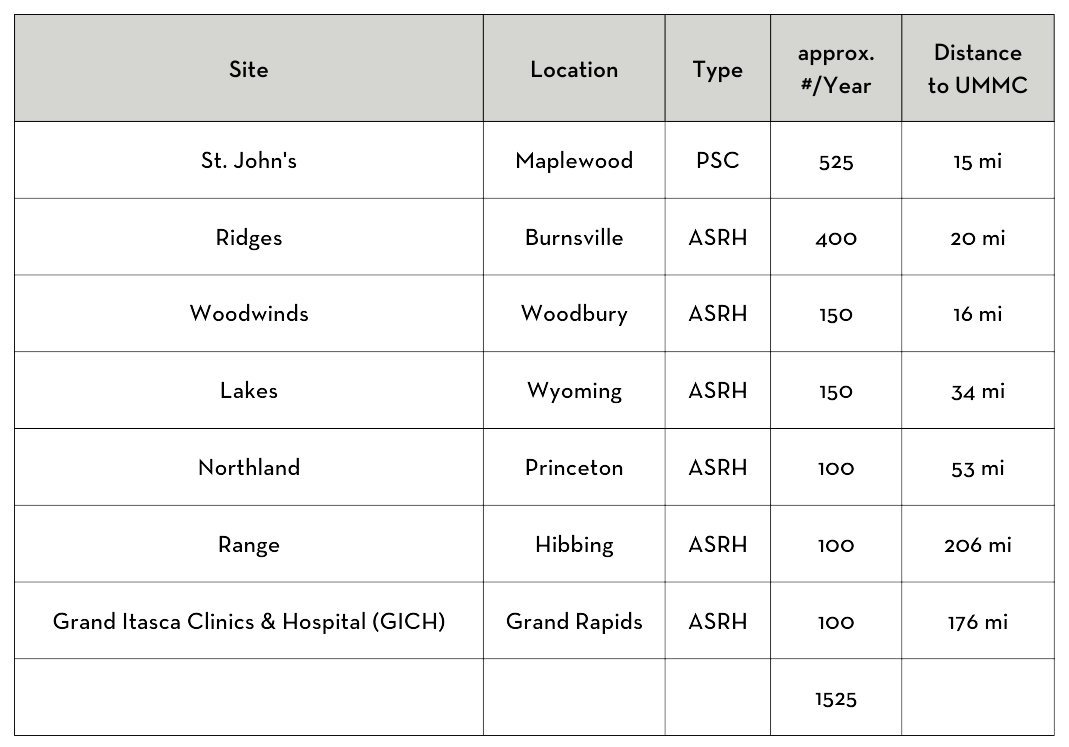Clinical Experience
Clinical Aims & Mission
The Stroke Program aims to provide the best patient-centered care, tailored to meet the needs of each patient.
Our mission is to improve the health of the communities we serve by being the leader in the provision of high-quality, comprehensive, state-of-the-art cerebrovascular treatments.
Fellows will leave with experience in various training settings including academic, community suburban, and rural hospitals as well as outpatient clinics.
Clinical Training
- 4 months of FSH Stroke & system telestroke coverage
- 1-2 months of night call from home for the MHFV stroke system
- 1-2 month of Neurocritical Care inpatient service (UMMC)
- 1-2 month of Neuroendovascular Intervention (UMMC, FSH, HCMC)
- 1 month as "junior faculty" on UMMC stroke service leading residents and medical students (rotation in development)
- 1-4 months of electives, including research and vacation, based on fellow's training track
- Fellows will also participate in outpatient stroke care clinics throughout the year.
Team
Southdale Hospital, where fellows will spend most of their days, is usually staffed by
- 1 VN attending
- 1 VN fellow
- 1-2 PA/NPs (7AM-5PM)
- 1-3 observers/rotators such as NCC fellows, Neurology residents, and/or medical students.
Possible Clinical Electives
- Neurocritical Care
- Neuroendovascular Intervention
- Neuro-Cardiology
- Neurorehabilitation
- Vascular Surgery
- Clinical Neurophysiology
- Neuroradiology
- Critical Care
- Others upon discussion/interest
Clinical Sites
System Telestroke Sites
MHFV Southdale Hospital (FSH)
- ~900 stroke diagnoses per year (ischemic, hemorrhagic, TIA)
- Suburban community hospital located 11 miles from UMN
- Certified Thrombectomy-Capable Stroke Center
- AHA Get With The Guidelines "Gold" Recognition
MHFV University of Minnesota Medical Center (UMMC)
- ~500 stroke diagnoses per year (ischemic, hemorrhagic, TIA)
- Academic hospital located in urban Minneapolis
- Comprehensive Stroke Center
- AHA GWTG "Gold" Recognition

Telestroke
Telestroke services ensure a consistent standard of care and access to vascular neurology specialists for all patients 24/7/365 regardless of their location in our healthcare system. This technology decreases unnecessary transfers and allows patients to be cared for in their own communities.
M Health Fairview began to provide telestroke services in 2015, and, in 2018, telestroke coverage expanded to all 10 of MHFV's adult hospital sites throughout Minnesota.
Telestroke services cover both emergent and inpatient cases throughout the system. Telemedicine allows for inpatient rounding at distant sites and patients are cared for and followed by specialists all the way through discharge.